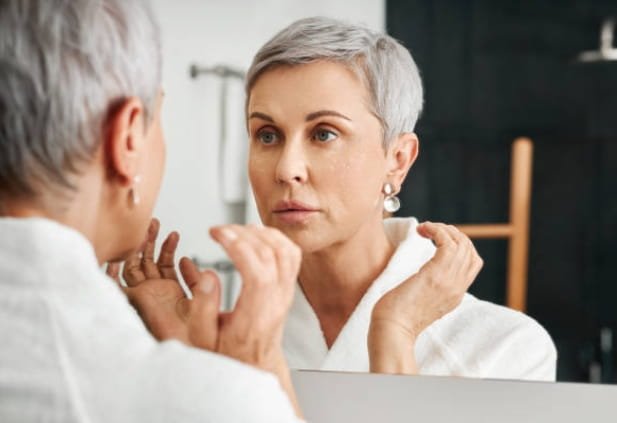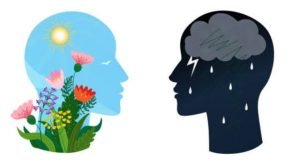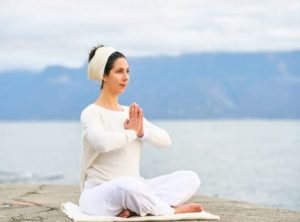
by admin | Jun 7, 2022 | General
How Do We Appreciate Beauty
One Of The Most Complex Processes In Nature We all know that beauty is subjective. We have different tastes in music, visual art, and even people. This is great because it allows for diversity in expression but also guarantees appreciation. Through observation and contemplation, we came to the conclusion that there are some rules regarding aesthetics that are pretty much universal.
Vibrant colors, symmetry, certain patterns, and proportions are appreciated by pretty much every species. Moreover, the arrangement of flower petals or the colors of a peacock’s feathers can be seen as nature’s idea of beauty which is why most of us like them. Even though there are some guidelines regarding aesthetics, like these ones, for example, the subject in its entirety is much more complicated.
We still don’t fully understand how we decide what is pretty and what isn’t. We also have trouble explaining why our tastes are often very different, even if we grew up in almost identical environments. Beauty has baffled the minds of scientists for centuries and continues to do so, and this is precisely why we decided to dedicate an article on this topic!
Let’s learn!
What Is Happening Inside The Brain?

Evaluating certain things as beautiful is a process that happens exclusively in our heads. Chemically speaking, this process takes the form of physical pleasure because of the specific chemicals our brain emits when we see something beautiful. But the more interesting question is where the processes connected with aesthetic appreciation happen.
The main part of the brain responsible for this evaluation is the anterior insula – one of the deepest folds of the cerebral cortex. This was an unexpected discovery when it happened because this part of the brain is usually used for the negative evaluation of objects. Currently, scientists can’t prove why this is the section of our brain used for appreciating beauty.
However, there is one sound theory.
It is basically the idea that earlier humans used this part of their brains to determine if certain foods were good or bad for them, but as they started to create art, they effectively made the same judgment about what they created as they did for food and shelter.
Hence, this is a proposed explanation of the reason why we still use the insula when we evaluate paintings or music.
Pretty cool stuff, huh?

When it comes to faces, however, things get complicated. More than one section is activated when determining if a person is attractive to us. An area called the fusiform gyrus, which is specially tuned to processing faces, is the one which is mainly active.
An adjacent one is also used, called the lateral occipital complex, which focuses on objects. These two small pieces of our brains are the ones responsible for our opinion on whether an individual is beautiful.
Attractive faces also activate our reward and pleasure centers which are located in the front and middle part of the brain.
Beauty & Evolution

The most supported hypothesis is that our sense of beauty has evolved consequently from our need to evaluate objects that are biologically important. The theory is based on the fact that the parts of the brain we use to appreciate beauty are the same ones as the ones we use to understand if something is healthy for us or not (like certain kinds of foods and suitable partners, for example).
Evolutionarily speaking, we understand that beautiful things are also healthy. Think of fruits and vegetables, for example. If they’re proportionate and have vibrant colors, they are likely full of nutrients. The same applies to nature – if a tree is big and symmetrical, its wood can likely be used to make a shelter.
Furthermore, we deem certain facial features as universally beautiful because, from an evolutionary standpoint, that is evidence that our potential partner is healthy. These features are facial symmetry, skin homogeneity, and a healthy body structure. Nowadays, what we see as beautiful is shaped not only because of those qualities.
Our brains take into consideration our environment and past experiences, as well as things such as social media standards.
What About The Skills We Use?
It’s not easy to determine what is beautiful, but it sure is fun. Perception (used for appreciating things we deem as beautiful) and pattern-finding have to be trained like any other skill. Similar to how children are fascinated by simple colored toys, as we grow older, we are fascinated by more complex shapes because we have developed this skill and want a challenge.
The pleasure in bettering perceptual skills, especially when performing, comes when skill matches aspiration. The process itself is often seen by the brain as difficult, but when we achieve our goals, we feel so satisfied that we justify the stress we have been through.
Both consumers and creators take joy in the process.
They also constantly set the bar for others higher through positive or negative feedback. Creators want to impress and have their skills rightfully appreciated, while consumers develop higher expectations after each positive change.
What Is Deemed As Universally Beautiful In People?
Although beauty is subjective, there are some elements that all of us find attractive.
One of them is symmetry.
This is because our brains connect it with health which is, in turn, beneficial from an evolutionary standpoint. More importantly, though, asymmetry in pretty much all species is synonymous with some sort of disease or unique condition. This is why most of the celebrities who are deemed extremely beautiful have very symmetrical facial features.
In opposition to this, however, another factor we humans find attractive is ethnic diversity. We usually find people from mixed races pretty because in our subconscious this means they have more adaptability than an average person. The different genes are representative of the capability to survive in different environments and provide a bigger pool of positive qualities.
Why Do We Enjoy Beauty?
This is a complicated process, and we are not yet sure why we enjoy the beauty for the sake of it.
Aesthetic pleasure is activity-focused. Think of it like cuddling – we don’t have a physical need for it, and we reach a point in which we no longer want to stay cuddled. However, all of us enjoy it from time to time, and it makes us happy. Beauty in this sense is not end-directed like hunger is, for example.
It doesn’t bring us anything essential for our survival. It doesn’t focus on an end goal. Aesthetic pleasure is simply the pleasure of contemplating and appreciating something. We look at beautiful landscapes not because we need to, but because while doing so, we let our brains wander. Psychologically speaking, when we focus on pleasurable activities such as admiring beauty, our worries seem to fade.
From this perspective, beauty is useful because it gives us time to rest and contemplate. It serves as a reminder that not everything in the world has to be goal-oriented.
Final Thoughts
Beauty is a complicated thing for sure. We still have trouble defining it and figuring out where exactly it comes from, but that’s why it’s so fascinating. We have a lot more to learn about it, and that knowledge will surely change some of our perceptions.
Currently, however, we still have a long way to go just to give it a precise description. This is why you can share what you find beautiful and help us understand it better. What is your take on beauty perception? Comment below!

by admin | Jun 6, 2022 | Health, General
Why you SHOULD eat Honey
Honey is an organic, natural sweetener that serves a great purpose as a sugar alternative.
It is widely used in almost every cuisine around the world.

This is perhaps because it has many great qualities such as its indefinite shelf life, its ease on the stomach, and the reason that it adapts to all cooking processes. According to an article by Date Carson, honey dates back to 2 100 B.C. It is believed that the natural sweetener was found in Asia or Africa.
On top of that out of 12,000 different bees, there are only a few varieties that store honey. An average bee’s life span is from 4 to 6 weeks and the required amount of bees to produce 450g (1 pound) of honey is around 160,000. That means, in order to get a single jar of honey, there are so many generations of bees involved.
Honey is also used in Medicine…
According to a 2012 review, regardless of whether it will be consumed directly, mixed with other remedies, or applied directly to the skin honey helps for treating the following illnesses or injuries:
- Coughs
- Vomiting
- High Blood Pressure
- Obesity
- Arthritis
- Eczemas and dermatitis
Now, let’s look at what are the pros of eating honey.
Benefits Of Eating Honey

- Honey Helps With Coughing
We bet that the good old honey came in handy at least once in your lifetime. It is believed that honey is an effective measurement against a cough in children and adults.
One or two spoons before bed is a guarantee for a calmer night.
- Honey Supports A Healthy Guy
According to a study from 2017, honey contains prebiotic properties. As we know, prebiotics help ferment beneficial bacterias in the gut. Furthermore, this was related to a stronger immune system and general welfare.
- Honey Contains Quality Nutrients
Honey is not only rich in antioxidants, it is also very rich in nutrients. It is found that there are 31 minerals found in honey, such as magnesium, phosphorus, potassium, and calcium.
In general, honey cannot be a substitute for a healthy diet, however, it does contain many important nutrients in its complex structure, which can benefit us on many levels!
- Honey Is Rich In Antioxidants
Some types of honey help protect your body from cell damage. It is believed that there are almost the same amount of antioxidants in honey as in fruits and veggies. Having antioxidants in our diet is healthy because they may prevent the development of chronic diseases like heart disease and cancer.
- Honey Improves Your Sports Performance
As we know honey is far better than glucose from sugar, used to boost endurance.
Consuming a spoon of honey before or even during your training is believed to enhance your athletic performance.
Pro Tip:
Add a spoon of honey to your bottle of water and consume it during your session.
But with so many benefits, is there something that could go wrong?
Cons Of Eating Honey
- Honey Is Rich In Calories
If your goal is to decrease body fat percentage, then consuming a lot of honey might not be a good idea.
Because of its liquid form in most cases, eating too much honey can easily make you exceed your daily caloric intake.
Always strive NOT to exceed the recommended amount of honey per day, which is around 1-2 small spoons for a healthy person without any weight problems.
- Honey Raises Blood Sugar Levels
For this reason, always use honey in moderation.
- It’s a Risk to Give to Babies
Babies don’t have the required digestive system to consume honey, and there is a risk of botulism.
Takeaways
Honey is one of the oldest foods in the world and it is used in almost every cuisine around the globe, as well as in medicine.
It has many benefits but should be taken in moderation because it can be very calorie-dense.
Thank you for reading and don’t forget to share the article with a friend!

by admin | Jun 6, 2022 | Health, General
The Stages Of Personal Development
Personal development is a vast topic, which has many stages and involves a lot of continuous effort through time. There isn’t really a thing that will set you for life through a short burst (well, maybe there is but just financially). In the context of character growth, personal development is a life-long quest with no end point.
We learn, as long as we are alive and curious enough to absorb more and grow.In this article, we’re going to talk about the stages of personal development and how to recognize and work with them.
Don’t Look For Shortcuts

The vast majority of people want to have it easy in life, without realizing that proper personal development is a system that has many stages, which require a certain amount of time and effort.
Shortcuts for short-term goals are the usual mindset for many people becoming more aware of their personal development, while in reality, it is nothing but a long-term process. Now, the main concept of personal development and growth is to acquire new knowledge, new skills and to go out of your comfort zone.
Think about it, no one achieved something great by being warm and cozy, right?
The Stages Of Personal Development
As we already mentioned, personal development is a process that goes through different stages, all the time.
Stage #1 – Self-awareness

For the most part, people act in a predictable way, repeating the same actions, feelings, thoughts and emotions. Once you become aware of those though, you have the opportunity to start analyzing yourself.
That exact self-analysis is the fundament of personal development, as it helps you learn more about yourself, your needs and interests. Think of this as your inner compass.
Stage #2 – Comparison
Once your personal development starts giving you results, you may find yourself being more social and observing/analyzing other people. From that analysis comes the comparison between you and your peers, making it easy for you to differentiate between the different types of behavior, which produce certain results and outcomes.
More often than not, such social behaviors and interactions, may lead to a good value exchange – You learn something from someone and vice versa.
Stage #3 – The point of no return

When you eat the fruits of your labor, you are in stage 3 of your personal development process. During this stage, you break through the mental barrier and start thinking about all the things you can do to make your life better, along with the life of others around you.
During this stage, you start learning new knowledge and skills exponentially fast and get a burst of inspiration.
Stage #4 – Acceptance
Once the curtain of your limiting beliefs and thought patterns is pulled away, you are in a limitless mindset.
In your head, you can achieve anything and everything, but you now know and accept that even though sudden bursts of inspiration do happen, the process requires discipline and dedication. This is where you have to further look through your priority list, modify it, set short and long-term goals and plan everything out, pen on paper.
End Quote
If we had to summarize the essence of this article in one single quote from a person who’s been through stuff, it would be this one:
“When you focus on being the best person you can be, you draw the best possible life, love, and opportunities to you.”
― Germany Kent

by admin | Jun 6, 2022 | General, Mind
The 6 Signs Of Maturity
Being mature doesn’t mean sitting alone all day, not talking to anyone, and being aggressive if someone does. In fact, maturity is somehow different from what we think of it. Although mature people have the ability to absorb society and work pressures without being surprised by the final results, it doesn’t mean they are emotionless.
Also, it isn’t a hard and fast rule that an older person is mature. Emotional maturity isn’t determined by our age but by the circumstances we face and how we learn from them.
To make things more clear, let’s have a look at the 6 most common signs of maturity!
#1 You Accept Your Mistakes

If we don’t have the courage to accept our mistakes, we can never improve ourselves, and we cannot be called mature people too. The first step to a proactive lifestyle is admitting mistakes and learning from them instead of feeling ashamed.
After all, the challenges of life and our mistakes are two things that carve us into better human beings if we take them positively.
#2 You Spread Love

Maturity isn’t associated with a grin on the face all the time, but a sweet smile that can make anyone’s day! No matter what life throws at you, being harsh and shouting at others can never be the solution. In fact, patience and humbleness can do wonders for you and others.
As life is completely unpredictable, we cannot control circumstances at all times.
Mature people understand this point and happily accept what’s coming their way. A smiling face and showering love on children and elders not only makes their day but is also healthy for your emotional growth.
#3 You Don’t Become Disrespectful On Disagreement.
With over 7 billion brains in the world, not every mind needs to stick to your opinion. People have different experiences and thoughts, and just because someone disagrees with you at some point doesn’t mean they’re disrespecting you.
If you cannot interact with others in a humble way, you’re not a mature person. Besides positive thinking, mature people can also express their emotions with excellent communication skills without leaving a negative impact.
#4 You Don’t Make Excuses.

Why make excuses when you have responsibilities to take?
Well, that’s the mindset of mature people! Instead of making excuses and putting all the blame on others, they step forward to take responsibility for their actions, accept their mistakes, and make things better.
After all, running away from problems isn’t a manly thing! But, facing and fighting them definitely is!
#5 You Are Passionate To Learn
With the wide plethora of information and jaw-dropping discoveries this universe has for us, mature people are always ready to indulge in it and learn.
They understand that learning is a never-ending process, and the more you know, the less you know.
Taking pride in yourself as you know everything isn’t the trait of mature people. Instead, they are down to earth and always welcome creative thoughts and new learning opportunities.
#6 You Don’t Try To ‘’Fit’’ Everywhere.
If fitting into the crowd doesn’t make a difference, it’s better to stand out. We often try to mold ourselves under the pressure of society, not knowing whether we’re doing things right or not.
But, when it comes to mature people, the pressures of society have no influence over them. They set their own limits, and even if they have to stand out from the rest, they don’t hesitate to do so.
Final Words
The way mature people mold their minds and personality helps them become great people in society!
Although they may face backlash from others, that doesn’t have too much effect on them, not because they’re robots, but because they know how to cope with situations without being confused and disrespectful.
If you notice these signs of maturity in yourself, you’re surely becoming a better person and have a bright future ahead of you!
Resources

by admin | Jun 6, 2022 | General, Health, Life
The Areas Of Personal Development
“What lies behind us and what lies before us are tiny matters compared to what lies within us”, says Ralph Waldo Emerson. Almost every successful personality has given utmost importance to personal development and growth.
They have depicted personal development as a pathway leading to skills, attributes, and qualities needed to live an efficacious and prosperous life. Personal development is defined as a lifelong process. The Business Dictionary defines it as, “The process of improving oneself through such activities as enhancing employment skills, increasing consciousness and building wealth.”
Personal development involves self-care which includes all those activities that help us to evolve in our self-best. As George Bernard Shaw once said, “Life isn’t about finding yourself. Life is about creating yourself.” Personal development is not something that can be achieved overnight; rather , it’s an evolving process that includes several steps.
Starting from establishing our personal vision of life to understanding where we are now. Once we are able to comprehend our current standing then we can move ahead, and identify the areas where we need to work.
The Areas of Personal Development

There are several areas where we can start grooming ourselves for personal development. These areas are: physical, social, mental, emotional and spiritual.
Let’s go over them one by one.
Physical Development

A healthy body and a healthy mind, two essentials to ensure before taking on an expedition/journey, whether it’s an actual, physically-demanding journey, or your life journey!
Our physical well-being is an important ingredient in leading a blissful life. It’s not only about doing exercise, rather it’s about having a balanced diet that includes proper nutrition, getting proper 7-8 hours of sleep, and maintaining body weight and BMI levels.
When we are physically fit, we tend to have more energy and we can utilize this zealous energy in achieving our life goals, seamlessly.
Social Development
Smiles are contagious, so are positive vibes. Living in a society that demands social interaction and effectively communicating with people can help boost our self-confidence and self-esteem. Talking to different people not only helps in enhancing our confidence but also awareness of worldly scenarios.
People we connect with play a vital role in our lives as they implicitly impact our thought processes and moods. Therefore, interacting with the right people, learning new languages, and active listening can be helpful in our own development and growth.
Mental Development
When we learn something new, our brain tends to generate new neural pathways to hold onto the information. Mental development is most important in personal development because it helps to create a cushion for new skill sets and qualities to develop.
Mental development activities include reading a book, taking online courses or training, or watching informational and motivational YouTube videos. Not only these but also relaxation, keeping our mind tension-free can help in boosting our mental activity.
Emotional Development

Many people nowadays are more focused on Emotional Quotient (EQ) rather than Intelligence Quotient (IQ). This is perhaps, because people with high IQ might not be able to survive under high-pressure situations whereas people with high EQ are seen to be more stable, focused, and better achievers.
In today’s fast-paced environment, it’s necessary to be emotionally stable and not be hyped by unanticipated circumstances. Emotional development can be done via having a counselor/therapist, journaling things down, or even, talking to a friend!
Spiritual Development
People often confuse spirituality with being religious, whereas one’s religion has nothing to do with being spiritual. Spiritual development involves being fully connected to all five senses of our body. It is about synchronizing our doings with our thought processes. It is about creating coherence between our body and soul.
Spiritual development can be achieved through yoga, meditation, or praying if you are religious. A deep connection to your soul is a deep connection to your awareness, which enables you to recognize and take on the correct actions towards achieving your ultimate personal development.
Take-Home Message
You are not just a body, nor a brain… And quite frankly, you are not just a soul. In fact, you are an intricate mix of all those things, and this is perhaps why you, as a human, are able to do and feel so many things.
Personal development is a life-long journey that simply represents the goal of improving your mental, physical, spiritual, emotional and social development, thus enabling you to achieve the best version of yourself.
And so, are you ready for your new, best self?

by admin | Jun 6, 2022 | General
The Artist Versus The Scientist
Are They Really So Different
If we answer without thinking about it, artists and scientists have almost nothing in common. Or so would the most widespread stereotypes suggest. The first sort of people are like vibrant thunderstorms – they are impulsive and colorful and don’t conform to boundaries.
The second resembles a very complex building – sturdy and secure and reliant on the laws of the world. In this metaphor, both would even actively oppose each other.
However, what if we said that these two mindsets while having their differences, share some common traits and are definitely far from structurally opposite.
So, are you ready to learn more about these two mindsets? Let’s go!
The Two Mindsets

Now, after you have the basic premise, let’s have a deeper look at these two seemingly unrelated mindsets.
If You Are An Artist…

- You are innately curious.
- Your curiosity brings you the inspiration to create something new.
- You are open to change.
- Creation is never a straight path – it’s full of twists and turns, and you love every bit of it.
- You are passionate about your craft.
- You wouldn’t be yourself if you didn’t do what you do best – create.
- You are independent.
- No one else can truly be like you or understand every part of what you do, and you wouldn’t have it any other way.
- You thrive when you are creative.
- Everything else feels as if it’s not enough, as if you are not your best self.
- You feel best when you have the flow.
- This mystical power that makes everything work is your best friend and sometimes your worst enemy.
- You seek an audience.
- No artist can say they are one if no one has seen or heard even just a single piece of their work.
- You rely on your inner feelings.
- Whatever your emotions may be, they are your most significant source of inspiration and the reason why you create.
If You Are A Scientist

- You are innately curious.
- You want to know everything about the subject that interests you.
- You are open to change.
- Sometimes hypotheses don’t always work out, but that only makes the problem more interesting and your methods of research more diverse.
- You are passionate about your craft.
- Every puzzle must have a solution. It’s just a matter of how diligently you look for it.
- You are independent.
- If you are really certain of a statement, you would go to the edge of the world to defend it.
- You thrive when everything is practical.
- If everything is done correctly, only the truest outcomes will be left, and that’s what you aim for.
- You feel best when you are sure.
- Certainty is the best feeling in the world – if you’re sure of something, nothing can stop you.
- You don’t care about fame.
- As long as your discoveries are real, who knows about them makes absolutely no difference to your feeling of fulfillment.
- You rely on the truth.
- It doesn’t matter who or if someone is opposing you, the absolute truth is the biggest motivation for your diligent work.
The Comparison
- So how do these two types of mindsets compare?
- Let’s have a look at the differences and similarities!
Differences
Let’s start with how these two mindsets differ.
While one actively searches for an audience, the other doesn’t require other people’s opinions or fame to feel accomplished. Another thing that’s a major difference is that one type (the artist) relies on their inner feelings while the other only cares about the objective truth.
The way they complete their work is also quite different – artists have their sacred flow, while scientists depend on their senses of certainty and objectivity.
Finally, but equally important, one type thrives when they let their creativity roam free, while the others prefer for everything to be practical and orderly. (Guess which one’s which…)
Similarities
Now that we have the differences clear let’s see what these two mindsets have in common. For starters, they are both extremely curious – it is in fact their driving force most of the time. Following from that is the fact that both types not only don’t mind change, but they also welcome it with open arms.
Change means that their work has had an effect, and there’s no bigger recognition than that. Of course, that’s only true if they have another thing in common – that they are passionate about what they do. As long as they care deeply about their field, they are unstoppable in pursuing what they set out to do, and this is the main focus of their lives.
However, living this way is not easy.
This is precisely the other vital thing in which they are similar – both types of people are very independent – they can take care of themselves and can pursue their dreams alone should the need arise.
Because what they do is just that important – this is the only way they feel true to themselves.
To Summarize
When you really put your mind to it, it turns out that while artists and scientists have their differences, they also share a lot of their respective mindsets. Now which part tips the scales is entirely up to the individual’s ideology and strength of emotions.
However, one thing is certain – it’s never black and white when it comes to comparing these two mindsets.
Which one do you support more?
Page 3 of 7«12345...»Last »





























